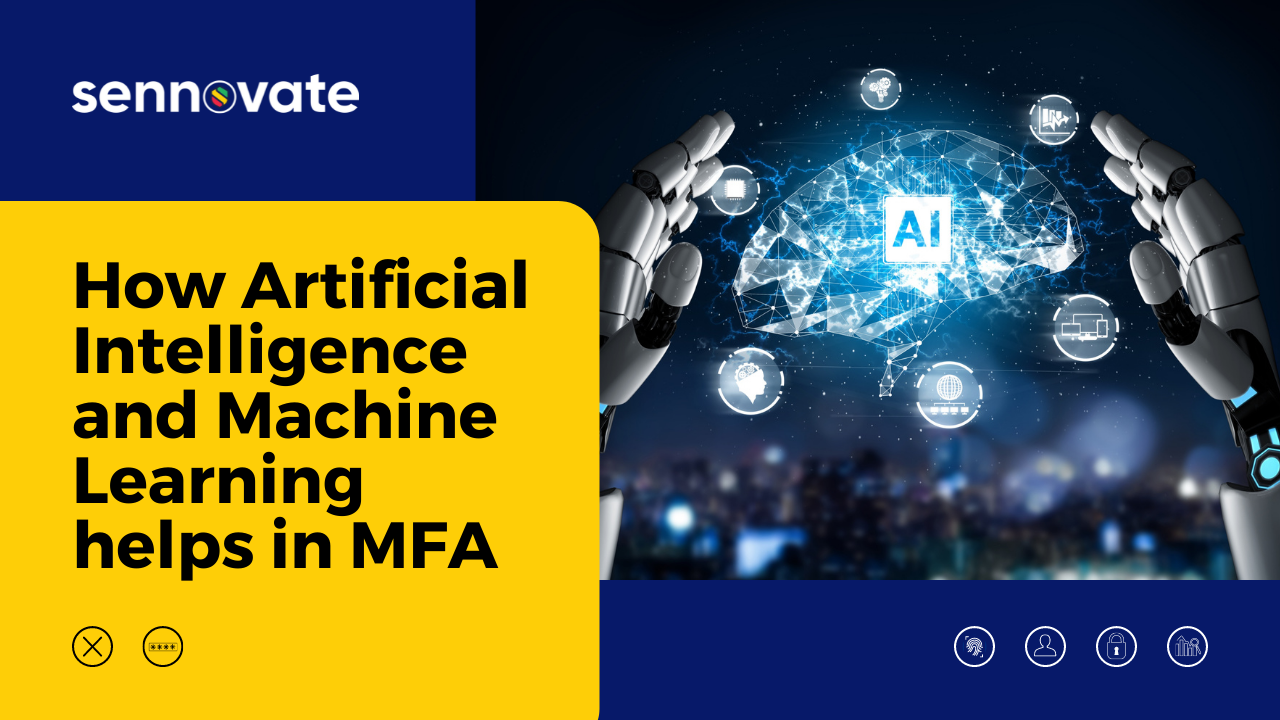

How Artificial Intelligence and Machine Learning helps in MFA
Securing user profiles has been the foremost priority of any organization, since the surge of cybersecurity-related crimes. Even in ancient times, a person’s credibility was confirmed by questioning “something you know” and the same password system was used to authenticate a user’s identity when systems were introduced. The year 1986, included another factor of “something you have” like OTPs, which brought into light the concept of Two Factor Authentication.
The initiation of Multi-Factor Authentication in recent times started with the usage of yet another factor, which verified “something you are”, like biometric verification. But even with all these verification methods, hackers have proved to adapt to the fast-paced domain without any trouble. The identity and access management field have to put an effort to step up their game, and Artificial Intelligence and Machine Learning are ready to provide that edge.
Role of Artificial Intelligence
“While we’re seeing high demand for AI technology, platforms, and applications, AI’s ubiquity will ultimately make the technology commonplace in software development.” These are the words of Andrew Bartels, VP and principal analyst at Forrester.
Time and time again, AI has proved to be more capable than humans in noticing and facilitating all domains which need our specific attention. A recent report from Forrester has assured that an Artificial Intelligence embedded software will be a very common occurrence by 2023. Even now, these AI systems can collect the underlying information of where there could be a breach in the security, analyze those points, and actively protect the user’s identities. On this basis, a new factor of “somewhere you are” is established under the name Adaptive MFA.
Adaptive MFA
Adaptive MFA is all about context. The context information is collected by the AI in these systems and processed. Based on this, a risk score is calculated. This risk score determines the method of authentication for the users.
- Low risk: Password is enough for the login process.
- Medium Risk: MFA is implemented to ensure identity.
- High Risk: More authentication steps are taken and the system notifies the user through the registered email address and phone number about the suspicious activity.
The factors that are taken into account when calculating the risk score are:
- Time of Login: If a login attempt is made within a few minutes of the initial login process, then there is a possibility for the data to be stolen.
- Location: If a user tries to log in to an account from two different locations, then it leads to the Artificial Intelligence(AI) systems to be suspicious.
- IP Address: A user usually attempts to log in from the same IP Address. Changes in this address make the Artificial Intelligence(AI) reconfirm the user’s identity.
Authentication monitored by Artificial Intelligence(AI) has a much larger scope. Instead of just sticking to processing login attempts, they could constantly monitor a user’s behavior to detect any breaches in the security. It could also come to a point where the AI decides on the number of factors that have to be implemented to ensure the security of a profile!
Role of Machine Learning
Based on the outcomes provided by the AI systems, machine learning algorithms can be implemented to further refine the authentication process.
Biometric Authentication
One of the most popular and user-friendly methods of authentication is biometric verification. There are several methods by which this is implemented:
- Fingerprint recognition: The fingerprint scanner gets a black and white image of the finger. Then, the intricate features in the image are extracted by deep learning techniques.
- Iris recognition: Every single person in the world has a unique iris pattern, and this is processed with image processing techniques and a decision tree algorithm is used for the classification.
- Palm recognition: This is mostly used in hospitals. Infrared sensors are used to scan the palm, and the output image is a copy of the blood vessels. Then, the classification is done based on machine learning algorithms.
- Voice recognition: When we give any vocal input, the analog data is taken in and converted into digital data with the help of neural networks.
- Face recognition: The image of a face is captured, and details like the alignment, size, and shape of the face are analyzed and processed with deep learning techniques.
To know about how we use biometric authentication in our day-to-day life, check out our blog!
Behavioral dynamics
Another authentication technique that is implemented with machine learning is by verifying the behavioral dynamics. Every individual human being possesses an innate behavior that could be analyzed by machine learning algorithms. Some of the behaviors which could be considered are:
- Keystroke dynamics: This analyzes the rhythm with which the user types the password on their keyboard.
- Mouse dynamics: This takes into account how the user interacts with the mouse or the touchpad.
- Hardware interaction: This deals with how the user handles their devices and at what position.
These data can be collected, and once the system is familiar with its user, identity change can be detected with the change in these behavioral patterns.
These AI-based authentication systems and predictive analytics using machine learning are already making our lives much easier. Soon, these techniques will go beyond the entry-level sign in methods and encompass other areas where the security of the user data is essential.



